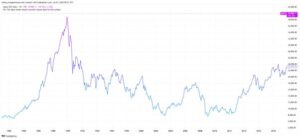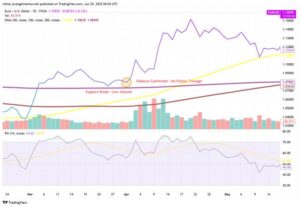Economic Growth Slows, Falling Short of Forecasts
Australia’s economy grew at a slower-than-expected pace in the third quarter of 2024, according to data released by the Australian Bureau of Statistics on Wednesday. The real GDP increased by 0.3% quarter-on-quarter, a sharp deceleration from the 1% growth in the previous quarter and below the Reuters forecast of 0.4%. On an annualized basis, the economy expanded by 0.8%, missing expectations of a 1.1% rise.
The Australian economy has been on a decelerating trajectory over the past two years, largely due to aggressive monetary tightening by the Reserve Bank of Australia (RBA). Since May 2022, the RBA has raised interest rates by a total of 425 basis points, keeping the benchmark rate at a 13-year high of 4.35%. Although headline consumer price inflation (CPI) dropped sharply to 2.8% in the third quarter due to government energy rebates, core inflation—which excludes volatile energy and fuel prices—remained elevated at 3.5%, still above the RBA’s 2%-3% target range.
Inflation Remains a Key Concern
Despite some easing in overall inflation, the RBA has emphasized that core inflation remains “too high” to consider rate cuts in the near term. The central bank reiterated its commitment to keeping monetary policy restrictive until it is “confident” that inflation is on track to return to the midpoint of its target range, approximately 2.5%.
This cautious stance underscores the RBA’s determination to combat persistent inflationary pressures, even as elevated borrowing costs weigh on economic growth.
Impact of Prolonged Tightening
The cumulative impact of the RBA’s aggressive rate hikes over the past two years has begun to take a toll on various sectors of the economy. Higher borrowing costs have dampened consumer and business spending, contributing to the slowdown in economic activity. While headline inflation has declined partly due to government subsidies, the persistent strength in core inflation highlights the underlying price pressures.
Looking Ahead
The RBA’s next monetary policy meeting is scheduled for December 10, where officials are widely expected to maintain the current interest rate. Market participants anticipate that the central bank’s tight monetary stance will remain in place for an extended period, given the stubbornly high core inflation.
For forex markets, Australia’s weaker-than-expected economic performance may weigh on the Australian dollar. Investors should closely monitor RBA policy signals, as well as trends in inflation and economic growth, to gauge their potential impact on currency movements.





